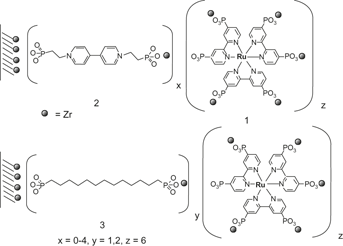Published online by Cambridge University Press: 19 January 2011

The heterocomponent films of polypyridine ruthenium(II) complexes and methyl viologen derivatives, and polypyridine ruthenium(II) complexes and alkyl chain derivatives have been successfully obtained using a layer-by-layer fabrication method. We determined their photocurrent generation properties and noted that the photocurrent generation strongly depended on the inner layer. A higher photocurrent generation in the donor–acceptor film was obtained than in a single-component film of the chromophore.